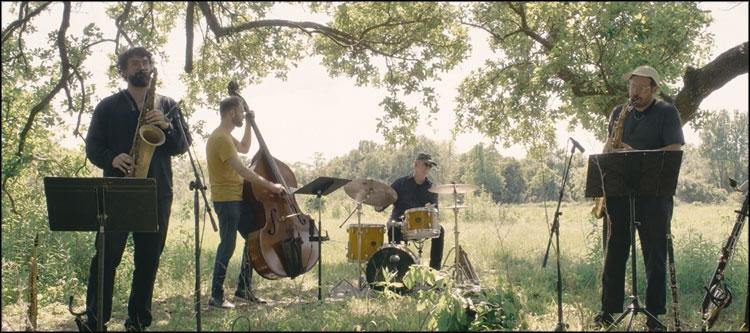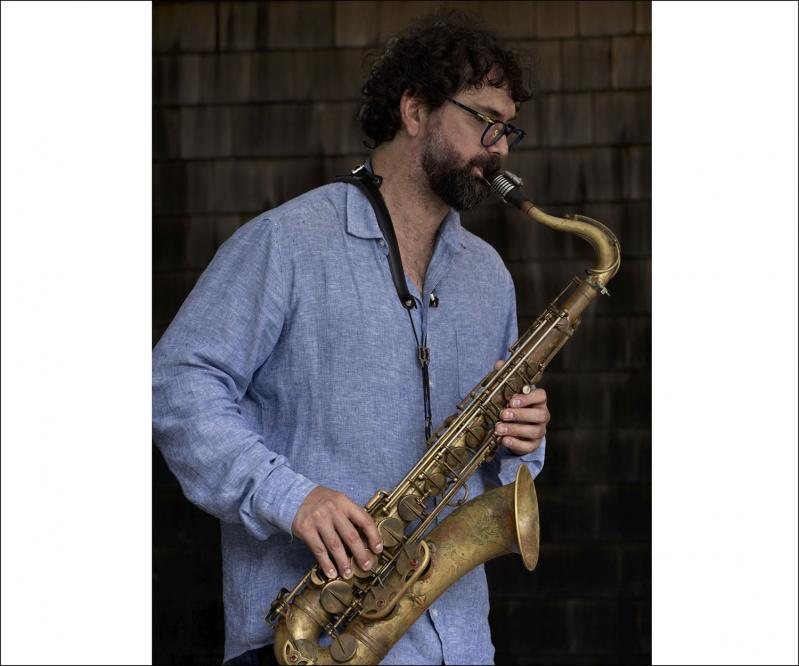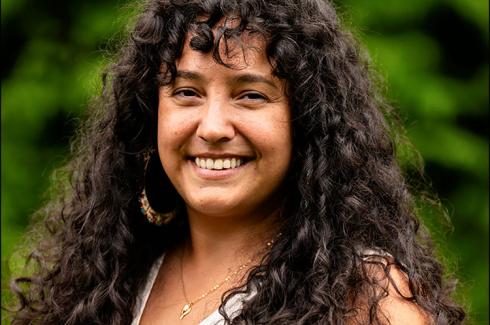When The Star last checked in with the multi-instrumentalist Tomas Majcherski, the East Hampton native, now based in Queens, was bringing his Tomas Majcherski Quartet to the South Fork for a performance at the Sagaponack Farm Distillery.
The player of tenor, alto, and soprano saxophone, clarinet, piano, guitar, and flute is clearly not one to sit still. On Tuesday, he flew to New Orleans ahead of his Sonic Chambers Quartet’s East Coast tour, which starts tomorrow in Carrboro, N.C. It will stop at the Masonic Temple in Sag Harbor for an 8 p.m. performance on Tuesday.
Based in New Orleans, the Sonic Chambers Quartet is promoting its debut album, “Kiss of the Earth,” on the 577 Records label. Tuesday’s performance, Mr. Majcherski said, will represent the first time he has brought a working band committed to original music to the South Fork.
Like the Big Easy itself, Sonic Chambers draws upon myriad influences, but among them he cites his upbringing in East Hampton, which included as musical mentors Marilyn Van Scoyoc, Michael Kendrot, and Hal McKusick, all from his schooling here, and Teddy Charles, a vibraphonist who had played with Miles Davis and Charles Mingus and lived in Riverhead until his death in 2012.
Sonic Chambers “can get pretty out there,” he said of the combo’s ongoing musical adventure. “We try to expand the boundaries in both directions, as it were,” though “I want to make sure it’s always palatable, always making sure the ears are ready for the extremes.”

When it was suggested that “Kiss of the Earth” is reminiscent of the boundary-breaking, free jazz of Ornette Coleman, he answered, “I’m glad you mentioned Ornette, he’s very influential. Also [the trumpeter] Don Cherry, who was musically a partner of his. I never met Don, but his longtime partner, Moki, a fabulous artist, was a close friend of my mom’s, so I got to know her some and talked about music with her. I bring that up to say that both Don and Ornette, the way they write a melody has been very inspiring to me, but also the way in which they were part of a group of musicians that reimagined composition in what got called the free-jazz world.”
This spurred a disquisition on how Coleman and Cherry’s fellow players would approach harmony to accompany them. “It’s almost a collective approach to composition,” he said, “something myself and Byron [Asher, his fellow saxophonist and clarinetist in the quartet] have taken very deeply into our project.”
There is traditional jazz-composition structure in the quartet’s works: a melody, followed by improvised solos, followed by a return to the melody. Where they stray from tradition is the combo’s lack of a chordal instrument such as piano or guitar.
“Our parts often split off to a kind of counterpoint,” he said, playing complementary parts to “flesh out the color, as if I were a chordal player. Those techniques are a little different than usual. There’s a lot of that kind of collective performing, improvising, that comes from the fact that everyone in the band has lived in New Orleans for a long time. A big part of traditional New Orleans music,” he said, involves “three horns playing different things around the melody in the front line.” The result is “it often sounds very free.”
Yet “there’s a ton of composition” on “Kiss of the Earth,” Mr. Majcherski said, much of it through-composed, i.e., composed from beginning to end, “almost like contemporary classical music. And I am definitely writing with classical counterpoint in mind.” In the Sonic Chambers Quartet, “we’re trying to get away from the classic ideas of soloing and individual composition.”
The title track on the debut incorporates an arrangement of a passage from “The Adoration of the Earth” from Igor Stravinsky’s “The Rite of Spring,” first performed in 1913 and widely considered one of the first modernist works. “I made the arrangement based off the score,” Mr. Majcherski said, “putting in place all the different melodic elements I heard. . . . If you listen to our recording and the orchestra, you can follow the rendition of it. We are playing it down in a way that’s through-composed, but the way it comes out every time is somewhat spontaneous.”
It was Stravinsky who said that “the more constraints one imposes, the more one frees one’s self of the chains that shackle the spirit.” In other words, limitations encourage creativity by forcing the composer to innovate within them. As Mr. Majcherski sees it, the quartet is “spontaneously arranging the music, even though we’re following a map.” The group sees its music as “the nexus between spontaneous composition and extended composition,” he said. “There is a lot of music in the last century that is falling somewhere in between, in a really interesting way. That’s what intrigues me.”
Along with Mr. Majcherski and Mr. Asher, the Sonic Chambers Quartet includes Matt Booth on bass and Doug Garrison on drums. The latter, also of the band the Iguanas, has performed at the Stephen Talkhouse in Amagansett. “This is a very different setting for him,” Mr. Majcherski said, “but we’re very proud to have such an esteemed musician playing with us.”
“We always keep spontaneity central,” he said. “I’m very happy to be able to present a band of this caliber back home in the Hamptons.”
Tickets for Tuesday’s show at the Masonic Temple are $20 and available at masonicmusicseries.com.




